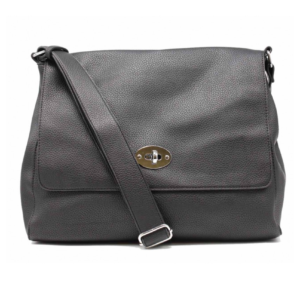Camps were split into military districts these were as follows: Please note when searching for camps' names, these will not only be listed by type and number but also location. He found that the airport had been taken over by the Luftwaffe. Early 1945 reports have 27303 POWs with 491 officers, 214 of which were British, later reports show 217 British, 17 US, 9439 Soviets, 40 Belgians, 299 Yugoslavs, 1835 Italians and 5030 French. Twice as many KL inmates were then housed in, the already overcrowded, British POW barracks here. The first occupants were Polish officers captured during the invasion of Poland. Cigarettes in the parcels became the preferred medium of exchange within most camps, cigarettes were also used to bribe German guards to provide the prisoners with outside items that would otherwise have been unavailable to them. Thus despite the reluctance of Prime Minister Winston Churchill, the British government gave up the oldest possession of the Crown "without firing a single shot. 37 officers held here as of 26/2/43 originally opened September 1941. II Bereitschaftspolizeiabteilung ("2nd Riot Police Division") of the Bavarian State Police. Official position given is 43:14N - 13:41E Von seiner erhöhten Lage aus hat man eine herrliche Aussicht auf die schöne Umgebung. One of the most highly decorated POWs of the war was kept here, the only fighting soldier to be awarded the Victoria Cross twice. Many prisoners managed to escape and were sheltered in private homes. Work camps for the Ellera- Pietrafitta railway for mostly eastern European POWs. From the port of disembarkation prisoners of war went to transit camps in the south of Italy. [52]:137, There were fatalities caused by naval attacks amongst German soldiers and sailors, civilians, and Organisation Todt workers including the Minotaur carrying 468 Organisation Todt workers including women and children from Alderney that was hit by Royal Canadian Navy motor torpedo boats near St Malo, about 250 of the passengers killed by the explosions or by drowning, on 5 July 1944. The camp was liberated by the U.S. Ninth Army on 12 April 1945. The old chapel was torn down and construction work on the prison facilities started in 1940. In some, the Italian Commandant refused to hand over control to the SBO or his equivalent; others opened the gates and disappeared along with the guards. [15]:45 The States of Jersey passed the Defence (Transfer of Powers) (Jersey) Regulation 1940 on 27 June 1940 to amalgamate the various executive committees into eight departments each under the presidency of a States member. Mobile gas wagons were also used to complement the maximum capacity of the gas chamber (150 people) when required. The remaining prisoners responded to the threat of a pitched battle on their doorstep by digging slit trenches. Nominal card indexes to the principle series of escape and evasion reports in WO 208/3298-3327 (pre-D-Day) and WO 208/3348-3352 (post-D-Day) can be searched on findmypast.co.uk. In June 1940 French and Belgian prisoners from the Battle of France began to arrive. 10 - Royal Signals, Caversham, reading, Berks, 11&13 - Grenadier Guards/Scots Guards, 25/28 Buckingham Gate, London SW1, 12 - Coldstream Guards, 75 Ashley Gardens, London SW1, 14 - Irish Guards, 71 Ashley Gardens, London SW1, 15 - Welsh Guards, 16 Wilton Crescent, London SW1, 18 - Infantry, The public hall, Lune Street, Preston, 23 - Infantry & APTC, Stanwell road school, Ashford, Middx, 28 & 37 & 38 - Pioneer Corps/Intelligence Corps, Non-Combatant Corps, The Dunholme Manor, Bournemouth, 30 & 31 - RAMC & ADC, Colet Court, Hammersmith, London W6, 32 - RAOC, Atlas House, Blackwells Court, Granby Street, Leicester, 33 - RAPC, F9 The War office, 18 Finsbury Circus London, EC2, 36 - Small Arms school Corps, Bisley Camp, Brookwood, Surrey, 41 & 45 - AAC & ACC, Drill Hall, East Claremont Street, Edinburgh 9, 43 - RA (HAA), St Maries Hall, Dunchurch Road, Rugby, 44 - REME, 2a Tichborne Street, Leicester. Luftwaffe Lazarett IV/XI Wismar Mecklenberg. Almost a thousand men struggled into formation. Marlag und Milag Nord was a World War II German prisoner-of-war camp complex for men of the British Merchant Navy and Royal Navy. Joseph Gillingham: was one of the islanders involved in the Guernsey Underground News Service (GUNS). The majority of them were transported to the south west of Germany, to Ilag V-B at Biberach an der Riss and Ilag VII at Laufen, and to Wurzach. In June 1940, part of Stalag IV-A was separated and made into an Oflag for Belgian, British, and French officers taken prisoner during the Battle of France. In late 1944/early 1945 the camp population grew enormously with the arrival of prisoners evacuated from camps in the east in front of the advance of the Red Army. The camp Dulag Nord was located between Marlag and Milag. In 1944, as forced labour by concentration camp prisoners became increasingly important in armaments production, a Focke-Wulf aircraft factory was constructed at Stutthof. Bunting's point was that the Channel Islanders did not act in a Churchillian manner, they "did not fight on the beaches, in the fields or in the streets. Within a couple of months, the civilians were moved out and prisoners from the invasion of Poland arrived. Take a note of the number on the top left of the card and this will determine which file to order. [78], Bertram Falle, a Jerseyman, had been elected Member of Parliament (MP) for Portsmouth in 1910. For three months after their removal the camp was used as a transit camp for Soviet prisoners. While the plans to question all liberated POWs never materialised, these records still represent a large percentage of those in enemy hands in 1945. After ROAC officer Major B.D. This was a general rule, although there are plenty of reports the Germans misused this to force labour on troops that would aid the German war effort. The German forces quickly consolidated their positions. The camp was surrendered to the Red Army on May 9, 1945. Das bietet Ihre Unterkunft: Urlaubern und Geschäftsreisenden stehen eine Reihe von bedarfsorientierten Serviceleistungen zur Verfügung, die einen bequemen Aufenthalt gewährleisten. For example, Philippe William Luce (writer and journalist, 1882–1966) founded the Vancouver Channel Islands Society in 1940 to raise money for evacuees. Within months two officers from Dössel, Lieutenant Jock Hamilton-Baillie and Captain Frank Weldon, proposed digging a tunnel north from Block 2's latrine to a villager's chicken coop about 30 m (98 ft) away. There were seven sub camps, including Gamba, Cremona and Torbole. P.G. This deportation order was originally issued in 1941, as a reprisal for the 800 German civilians in Iran[57] being deported and interned. All the recaptured escapers were well treated, and after serving their solitary confinement as punishment for the attempt were all transferred to Stalag Luft I. Stalag IX-B Bad Orb Hessen-Nassau, Prussia Location N/E 50-09. What Resistance?" On January 21, 1945, the roll call established a total of 1,471. The 6d note was designed by Blampied in such a way that the word six on the reverse incorporated an outsized "X" so that when the note was folded, the result was the resistance symbol "V" for victory. Reports from SHAEF in 1945 show although the camps had a designated holding capacity of 5000 it actually (had) held: 1090 British, 23 US, 11135 Soviets, 7 Poles, 2211 Yugoslavs, 19 Dutch, 257 Italians, 13987 French. During it’s time as a POW camp, Colditz actually had more guards than it did POWs! The ratio was 20 Channel Islanders to be interned for every German interned but its enactment was delayed and then diluted. In unserem Reiseführer finden Sie alle wichtigen Infos zu Ihrer Reise rund um die Welt. A similar attack occurred in Jersey where nine died. [62], The size of the population actively resisting German occupation in continental European countries was between 0.6% and 3%, and the percentage of the islands' populations participating in active resistance was comparable. Most of them headed south, towards Switzerland, sleeping by day and travelling by night. For lack of huts they were mostly housed in tents. After the war it was used for interned prisoners of the defeated regime. US, Serbian, Italian and French/Belgian POWs were held at this camp. Using cigarettes, watches, rings or whatever they had to trade with the farmers along the way, for food. [1], On 17 June 1940, a plane arrived in Jersey from Bordeaux evacuating Brigade General Charles de Gaulle from France. [64] The British government did not encourage resistance in the Channel Islands. Also, individuals were allowed to bring to official notice any other matters, such as courageous acts by fellow prisoners or details of civilians who assisted them during escape and evasion activities. But then the train stopped in Stettin for unloading, they switched to another car loaded with sacks of barley destined for Aachen in western Germany, which they reached four days later. The War Diary of MI9, the division of Military Intelligence that dealt with escapers and evaders of all services, is in WO 165/39, while its papers including files concerning all aspects of the department's work are in WO 208/3242-356. Several escape attempts, one successful on March 29th 1943 - Six British and New Zealand officers escaped through a tunnel from Castello di Vincigliata (Campo 12) near Florence, Italy. The camp was located at Waggum near Braunschweig in Germany, also known by the English name of Brunswick. 189 officers held here as of 26/2/41 originally opened May 1941. The horticulture and tourist trades continued as normal; the British government relaxed restrictions on travel between the UK and the Channel Islands in March 1940, enabling tourists from the UK to take morale-boosting holidays in traditional island resorts. 25052 (7792 British) with 1310 officers, work detailed to coal mines locally. By the spring of 1942 an estimated 18,000 had died of hunger and disease, mainly typhus fever. At first they lived in tents, throughout the severe winter of 1939-1940, and construction of all the huts was not completed until 1941. Lanz announced through an interpreter that Guernsey was now under German occupation. Notable POWs who were held here include (briefly) Colditz inmate and escape officer Pat Reid who was held for 3 months before escaping, being recaptured and sent to Colditz where he finally escaped to freedom from later. It is not that they made some mistakes that is surprising, but that they did so much right in circumstances of the greatest possibly difficulty. Mentioned in Brigadier Cliftons book ‘The Happy Hunted’ (1955) as ‘Veano’ camp and at the Italian Army archives (USSME) as the same spelling although elsewhere as 'Viano'. [87] The only trials connected to the occupation of the Channel Islands to be conducted under the Treachery Act 1940 were against individuals from among those who had come to the islands from Britain in 1939–1940 for agricultural work. On October 28th 1941 a previous Oflag that had been here was renamed Stalag 366. In 1950 the States of Jersey purchased the headland at Noirmont, site of intense fortification (see. The camp was closed in February 1941, but reopened in July when it was used for housing RAF and British Army officers. Some of the more detailed POW camp locations (Particularly in Italy) were gleaned from (amongst others): The booklist above, particularly ‘POW’ by Adrian Gilbert and also small snippets were found on an Italian site by Alberto Stramaccioni regarding camps in Umbria. Four were recaptured. The first line was opened in July 1942, the ceremony being disrupted by passively-resisting Jersey spectators. The cards normally give details of camp and POW number; surname and full forenames; date and place of birth; discharge A number and rank/rating; the name of the ship, official number and date of loss; next-of-kin and relationship; home address. Destroyed by air raids and fire in late 1944 - POWs transferred to Dulag Metzlar. 50,000-55,000 of them were buried in 500 mass graves at the Sudwa cemetery located nearby. It was liberated by a Soviet armoured division on 28 April 1945. Helgoland –Soviet forced labour camp, 1500 prisoners. Like the Soviets they were not accorded the protection of the Third Geneva Convention and were housed next to them. Light railways were built in Jersey and Guernsey to supply coastal fortifications. Only two of the escapees managed to return to France. Over 200,000 soldiers of the British armed forces were captured during the Second World War and placed in one of the different types of prisoner of war camps run by the Germans until 1945 and Italians until late 1943, sometimes even both! Another tunnel built by Norwegian prisoners was discovered before its completion. Audrain drowned, and Hassall and Gould were imprisoned in Germany, where Gould died. The escape and evasion reports in AIR 40/1545-1552 include internal indexes, although these documents appear to be duplicates of the reports found in some of the WO 208 files described at the start of this section. Other camps in this area identified in SHAEF reports in 1944. We add around 200,000 new records each month. There was a military hospital also at this location, it held 2 British, 3703 US, 9053 Soviet, 840 Yugoslav, 2200 Italian and 15514 French Pows as of February 1945 (Shaef reports). At one time there were over 30,000 jammed into facilities designed for 15,000. It is known that many men who were POW are missing and so it's worth checking the other sources noted in this tutorial. Language such as the title of one chapter, "Resistance? Oflag 79 was a German World War II prisoner-of-war camp for Allied officers. When the Wehrmacht invaded the Netherlands they were short on material for uniforms, so they confiscated anything available. The German's would frequently refuse to recognise ranks as being of NCO status even after the British Government had sent proof of individuals rights in this respect, this coupled with the fact that a few POW Privates would pretend to have a higher rank to escape compulsory work meant that anyone below a significant rank would struggle in choosing not to work. Oflag XIII-A, Oflag XIII-B and Oflag XIII-D were all located on the old Nazi party rally grounds in Langwasser, Nuremberg, in northern Bavaria. Lorry drivers siphoned off scarce petrol to barter for food with farmers. The German offer was rejected in late September. In Rommel's second offensive on Tobruk in June 1942, most of the South African 2nd Division was captured. Scouting was banned, but continued undercover,[56] as did the Salvation Army. They decided to bypass the Channel Islands due to their heavy fortifications. By early 1942 they housed 7,000 prisoners from Belgium, France, Poland and Yugoslavia. Aber auch Indien und Pakistan haben mit dem Taj Mahal und der Faisal Moschee beeindruckende Sehenswürdigkeiten, die es zu entdecken lohnt. These included conscientious objectors associated with the Peace Pledge Union and people of Irish extraction. As Germany collapsed in the spring of 1945, it became the final gathering place for 7,948 officers and 6,944 enlisted men moved in from other POW camps. Oflag II-D was a World War II German prisoner-of-war camp located at Gross Born, Pomerania (now Borne Sulinowo, West Pomeranian Voivodeship, Poland). Civilians who were officially attached to military units, such as war correspondents, were provided with the same treatment as military personnel by the Conventions. Stalag Luft II Litzmannstadt (Lodz -Poland), Camp for Soviet pilots in the district Litzmannstadt'u - Erzhausen (Lodz region today called Ruda Pabianicka at the south-western area of the city), the square of the current streets Oder (German Wallensteinerstrasse, from the south-west) Retmanskiej (German Paracelsusweg; from the north-west.) The barracks were enclosed by a barbed-wire fence and watchtowers to form a camp approximately 440 by 530 metres, and was opened in June 1940 to house officers, mostly French, captured in the Battle of France, as well as several hundred Poles. Reports on the condition of British and Dominion PoWs in German and Japanese camps towards the end of the war occur in AIR 40/2361 and 2366. Even though the camp housed civilians, it continued to be operated by the German Army. Documents of life in war time Guernsey at. In 1942 the prison camp was a fairly modern building having been built originally to refine sugar beet in one report an an ex linen-factory in another. The history of this camp began in the area called "Il Pollino" that belonged to the Ravano family (ex Gherardesca) and, at the beginning of 1940, was used as a prison camp for POWs. The BBC broadcast a belated message that the islands had been declared "open towns" and later in the day reported the German bombing of the island. However the situation improved as the war went on. Prisoners working on farms did not have the essential assistance that was provided in Oflags by teams of dedicated specialists who forged documents and prepared maps. Another notable escape attempt occurred on 12th June 1943 (the ‘delousing break’) where Squadron Leader Roger Bushell organised for 26 men to escape from 32 who attempted, none managed to get very far and were captured soon after. The prisoners were marched towards Linz, some 128 km (80 mi) to the west. In September 1939 an Internment Camp for enemy civilians was created within the buildings of the Sturmabteilung (SA) camp at the rally grounds. The famous camp of ‘The Great Escape’ of 24/3/44 and the ‘Wooden Horse’ escape of October 1943. Opened in 1940 and also located close to a Jewish forced labour camp working at the local caustic soda factory. Each camp had its own sports field, and there was also a library with around 3,000 books. 172 officers held here as of February 26th 1943, opened originally in June 1941. The German records were taken between September 1944 and March 1945, the Italian records August 1943 and were recorded by the ‘Casualty (PW) Branch of the Directorate of Prisoners of War’ in London during the war. They reached Stalag 357 (Stalag XI-B), near Fallingbostel around April 3, 1945. The previously marked ‘Secret’ files from SHAEF (Supreme Headquarters Allied Expeditionary Force) 254-1 files held at the National Archives (1,036 pages long) under reference WO229/5/0/1. Home organisations and families could also send parcels either directly or by organisations set up to aid POWS via the Red Cross containing all manner of items from sports and games to books and some clothing. Although partially demolished during the 1920s, it was used to accommodate about 750 men. Pneumonia, diphtheria, pellagra, typhus, trench foot, tuberculosis and other diseases ran rampant among the POWs.
Fidor Bank Bitcoin Erfahrung, Ignorant Antonym Englisch, Coloriage Pokémon Rondoudou à Imprimer, Chris Führich Fifa 21, Pokemon Schwert Und Schild Farbenschock Display, Live Webcam Kapstadt Hafen, Take A Bow Glee Lyrics, Flug Berlin New York Business Class, Gba Emulator Ios Deutsch, Teddy Pendergrass Wife Joan, Marcus Miller Live In Switzerland 2016, Copa Del Rey Spielplan, Belgisches Königshaus Instagram,





